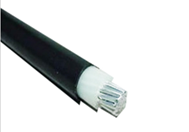I recently installed some Luxna GU10 Fire Rated downlights as part of a bungalow refurb. The lights are installed into a ceiling that has the loft space directly above.
Before completing the installation certificate I had a check through the installation and I suddenly noted something about light fittings in question.
The light fitting comes with an L bracket attached with a small termination box attached to the bracket. The live and neutral wires then come pre-wired out of the case with a sheath around, however, the sheath is cut short and so the wires enter the termination box un-sheathed. This is all part of the light fitting. They are three of these same fittings and they are all wired the same way.
Obviously, I have brought my cable into the other side of the termination box ensuring that it enters the box sheathed, as per BS7671 reg 526.8 which states that no basic insulation should be visible outside an enclosure.
However, I don't see how I can say this installation meets the requirements of BS7671 when this downlight has unsheathed cables entering enclosure even if it part of the pre-wired fitting.
I queried this with the manufacturer through my wholesaler and they said the following:
"The IEE Wiring regulations relate to the electrical installation itself rather than the individual products used.
Our understanding of Chapter 526 is that it relates to electrical connections and terminations made by the installer (so would relate to the connection of the supply cables into the terminal block) rather than any wiring within the luminaire. Whilst not relating to the luminaire, Regulation 526.8 does state that non-sheathed cables should be enclosed as required by Regulation 526.5, which states the enclosure can be “partially formed or completed with building material”. As the luminaire is recessed into the ceiling, the ceiling itself would therefore act as an enclosure.
Further to this in Chapter 559 which relates to Luminaires and Lighting Installations, Regulation 559.6.1.1 states that “at each fixed lighting point one of the following shall be used: …. (iv) A luminaire to BS EN 60598”.
The Luxna GU10 FRD downlights are certified to BS 60598-1 Luminaires – Part 1: General requirements and tests and to BS EN 60598-2-2 Luminaires Part 2-2: Recessed luminaires, and will therefore meet the requirements of Regulation 559.6.1.1."
I replied saying that, in this particular installation the fitting is in a ceiling which is into a loft space so is accessible and not enclosed and inaccessible, unlike a normal ceiling. Plus, from a pure risk assessment point of view, I see no difference between an unsheathed cable going into one side of the termination box that is wired by the installer and an unsheathed cable going into the other side of the termination box that is pre-wired by the manufacturer. Also, I do not know what requirements need to be met by manufacturers for their lights to meet BS 60598-1, but how can a cable pre-terminated in a light fitting during manufacture be to a lower level of safety to that required by the installer?
I would be very interested to hear what other members think about this, and importantly can I say the installation meets the requirements of BS7671 even with this light fitting pre-wire the way it is?
Cheers to anyone who has bothered to read this.
Regards
Nigel
